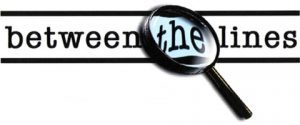
Press releases from Maryland’s governor would oftentimes be more appropriate than press conferences. The fears and stress associated with Gov. Larry Hogan’s press conferences are real. These pressers are announced in the early morning for the late afternoon typically, resulting in business owners and residents being on edge all day.
In fact, one restaurateur said this week he halted all his supply orders immediately upon hearing of the press conference being scheduled. He even told this media outlet his advertisement for this week would be cancelled if Hogan instituted any more restrictions on capacity. The latter situation has played out each week in the spring and this fall with Hogan holding businesses’ fate with each announcement.
This virus is serious, but it’s a dramatic enough of a situation based on the facts alone. Announcing these highly theatrical press conferences amid skepticism and fears is unnecessary. In the case of this week’s creation of a “widescale compliance and education enforcement operation” ahead of the holiday weekend, a press release to announce it and the associated snitch hotline would have been a better route. I don’t expect any changes in the near future, however, as it’s clear there is campaigning for 2024 underway.
x
x
If the metrics continue in the positive direction for Worcester County, public school officials should reconsider last week’s closure of school through the first of the year.
Worcester County’s daily positive percentage has been trending down since Nov. 16 when it was 7%. As of Wednesday, the county’s positive test rate was 4.19% (statewide 6.77%), down from 4.33% Tuesday. As for the seven-day moving average case rate per 100,000, Worcester County’s dropped Wednesday to 13.12 (37 statewide), down from 14.48 Tuesday. This level reached 24.32 on Nov. 16. Readers will remember county public schools were closed to in-person school instruction because the positive test rate had exceeded 5% and the cases per 100,000 had exceeded 15. These are benchmarks set by the state mandating when exceeded school systems should limit in-person instruction.
As far as school announcements this week, it was mostly quiet on the lower shore. Somerset County Public Schools did announce an extension of its in-person closure until Dec. 7 tentatively. The school system closed its schools on Nov. 9 when the county’s seven-day positivity percentage was 7.72% and its new case rate per 100,000 was 24.54. The school system website read, “Somerset County’s 7-day test positivity rate must be 5% or lower, and new case rate per 100,000 of 15 or lower for 7 consecutive days before in-person learning may resume.” Unlike Worcester’s metrics, Somerset’s numbers are going the wrong way. It’s clear Somerset students will not be in school anytime soon.
Each jurisdiction should be able to make its own decisions based on the variables at play. In Worcester’s case, there’s a lot more to consider than just the health numbers. It’s these other factors that will keep schools closed. There are the ongoing connectivity issues as well as busing concerns. There is also the matter of the morale of the teachers, who have concerns about their health as well as the work conditions that have been frustrating this fall due to the connectivity issues and the constant pivoting they must make between in-person and virtual teaching. Those concerns have been articulated by local teachers on social media throughout the fall and in more detail during private conversations I have with many in casual settings, including on the sidelines of athletic games, grocery store runs and waiting for carryout at restaurants.
Outside of the connectivity inconsistencies experienced in Worcester, most of the teacher concerns expressed of late were confirmed in a letter from the Maryland State Education Association President Cheryl Best to State Superintendent Dr. Karen Salmon.
“As you are aware, it is a huge effort to create lessons and transfer them to virtual then adapt them for in-person, or to bring materials home to teach virtually then move into a classroom situation and back again. No doubt that the stress is felt by all—students, families, educators, administrators, and the entire community. Add the lack of adequate federal funding and a failed national public health response, and the result is deeper stress and greater uncertainty,” she wrote. “In this moment, you can provide certainty and calm. While we believe that recent local decisions to rollback in person learning have been conducted wisely and with the best interest of the health and safety of students and educators in mind, we also know that setting return dates for partial in-person learning in two-week increments is not the appropriate response at this time. It is overly stressful on everyone and doesn’t allow for any type of continuity of learning or the ability for educators and families to plan ahead. We should give Marylanders a better ability to plan. … We urge you to work with educators and local school system leaders to prevent these elevated workload levels from turning into a prolonged burnout crisis that sets us even further back in our already struggling efforts to recruit and retain outstanding educators in our profession.”

